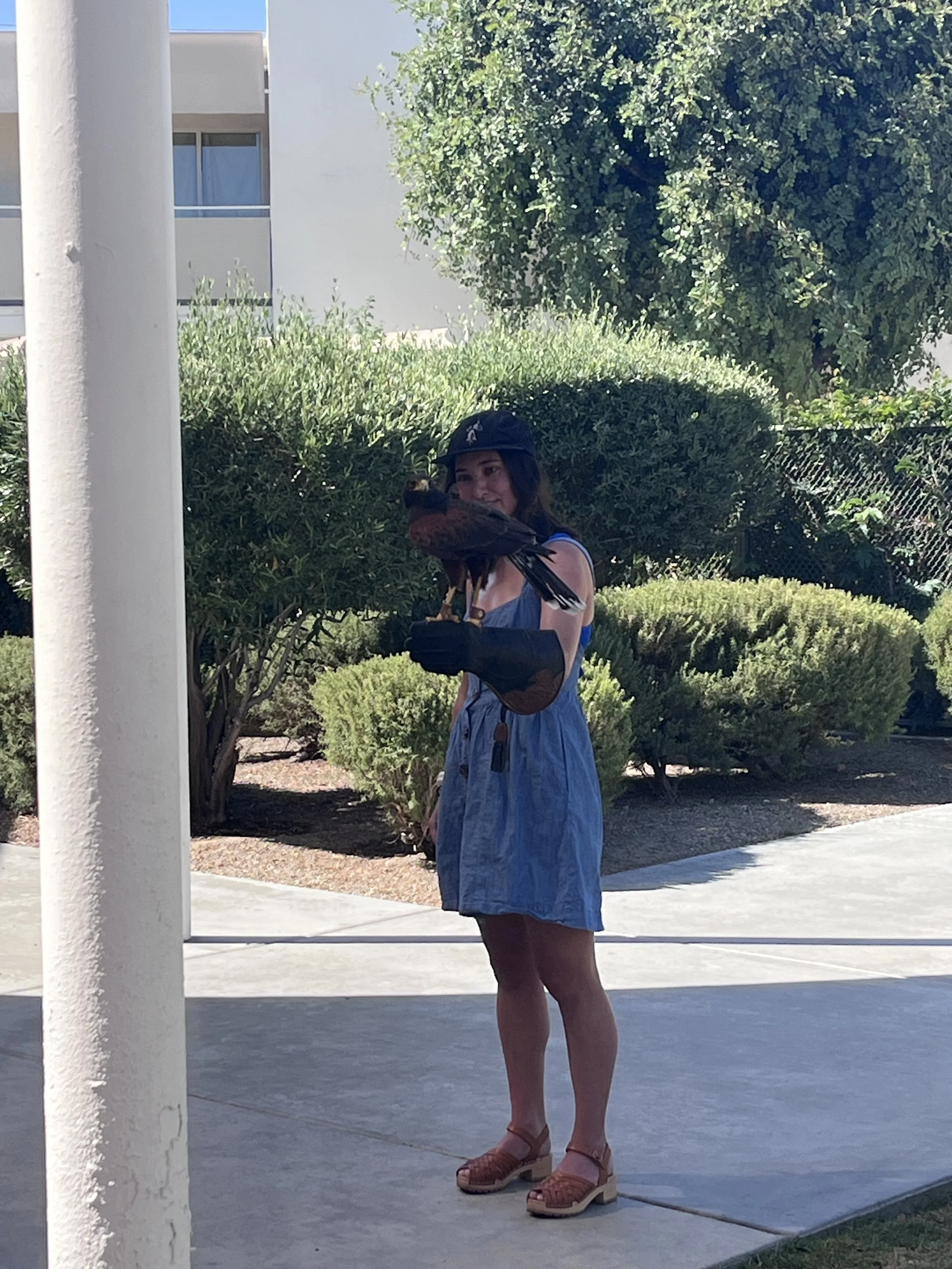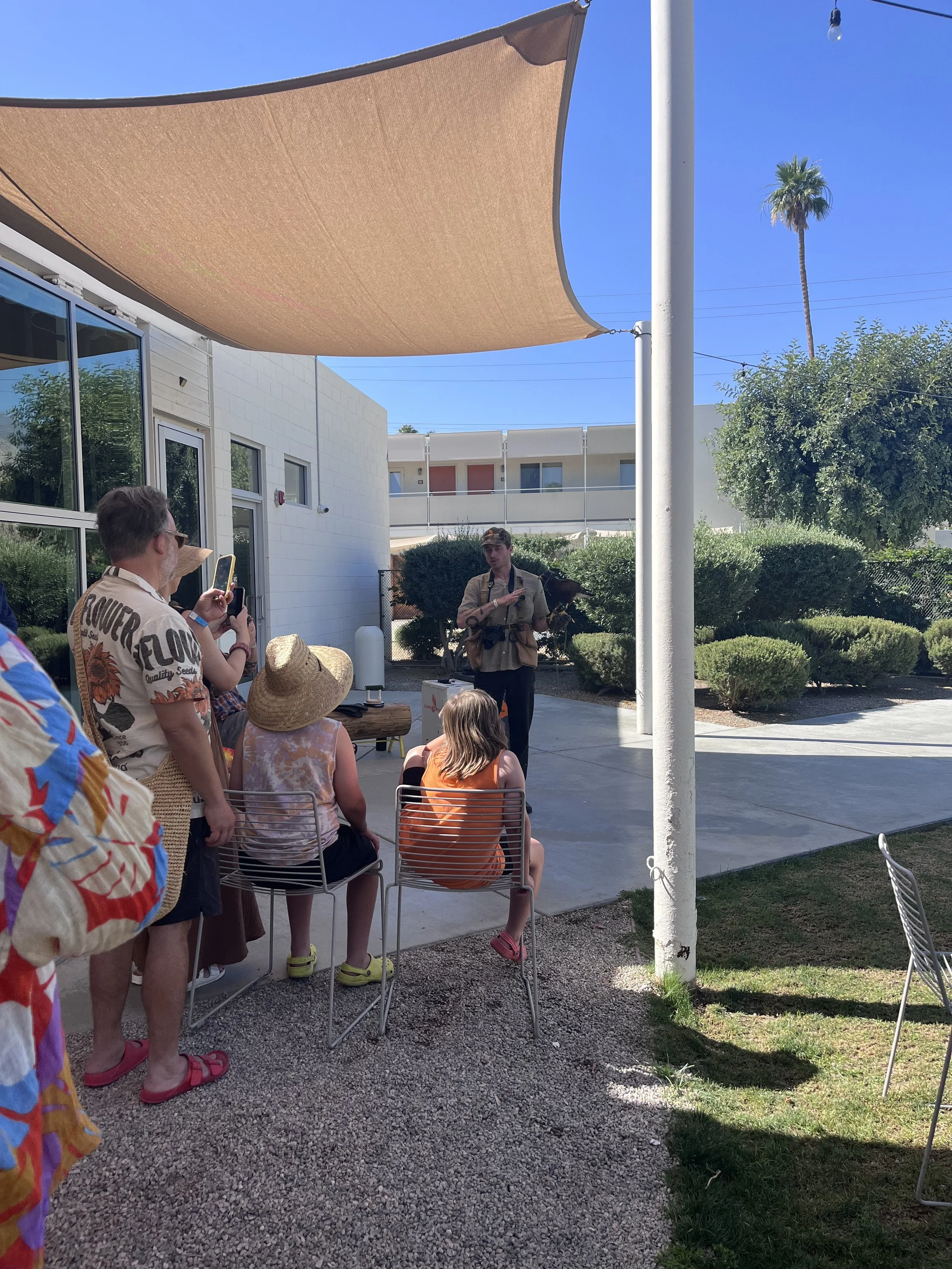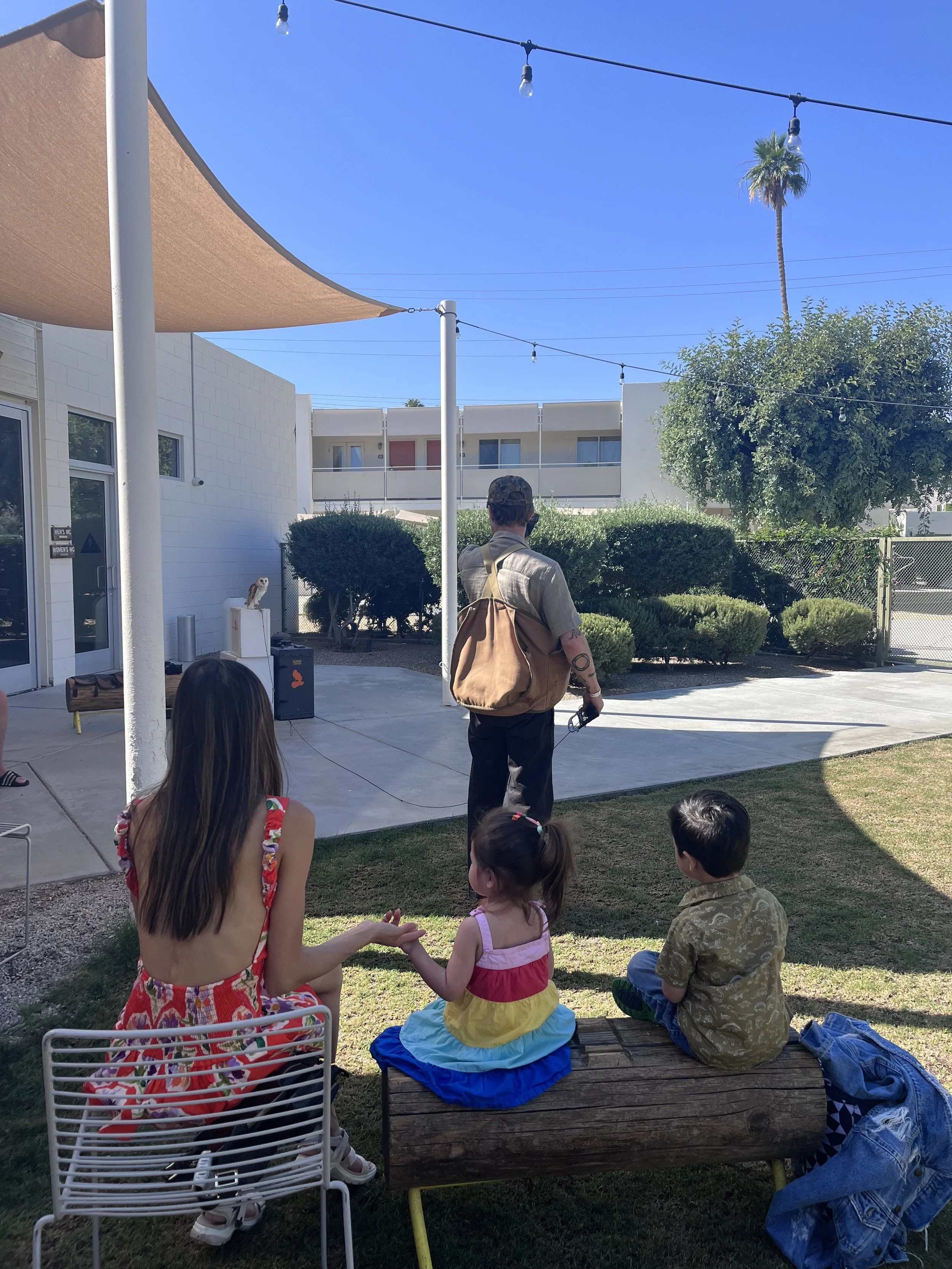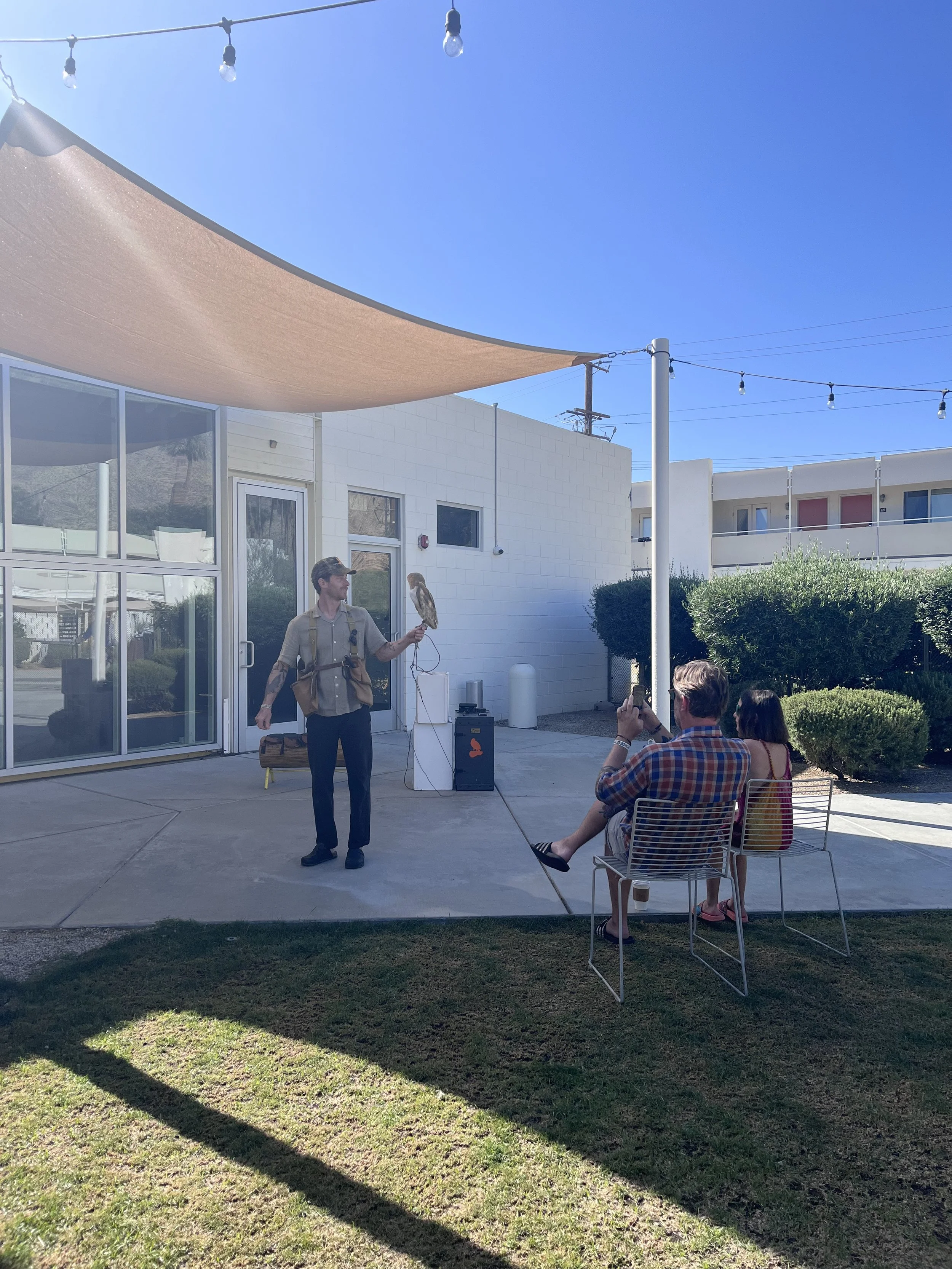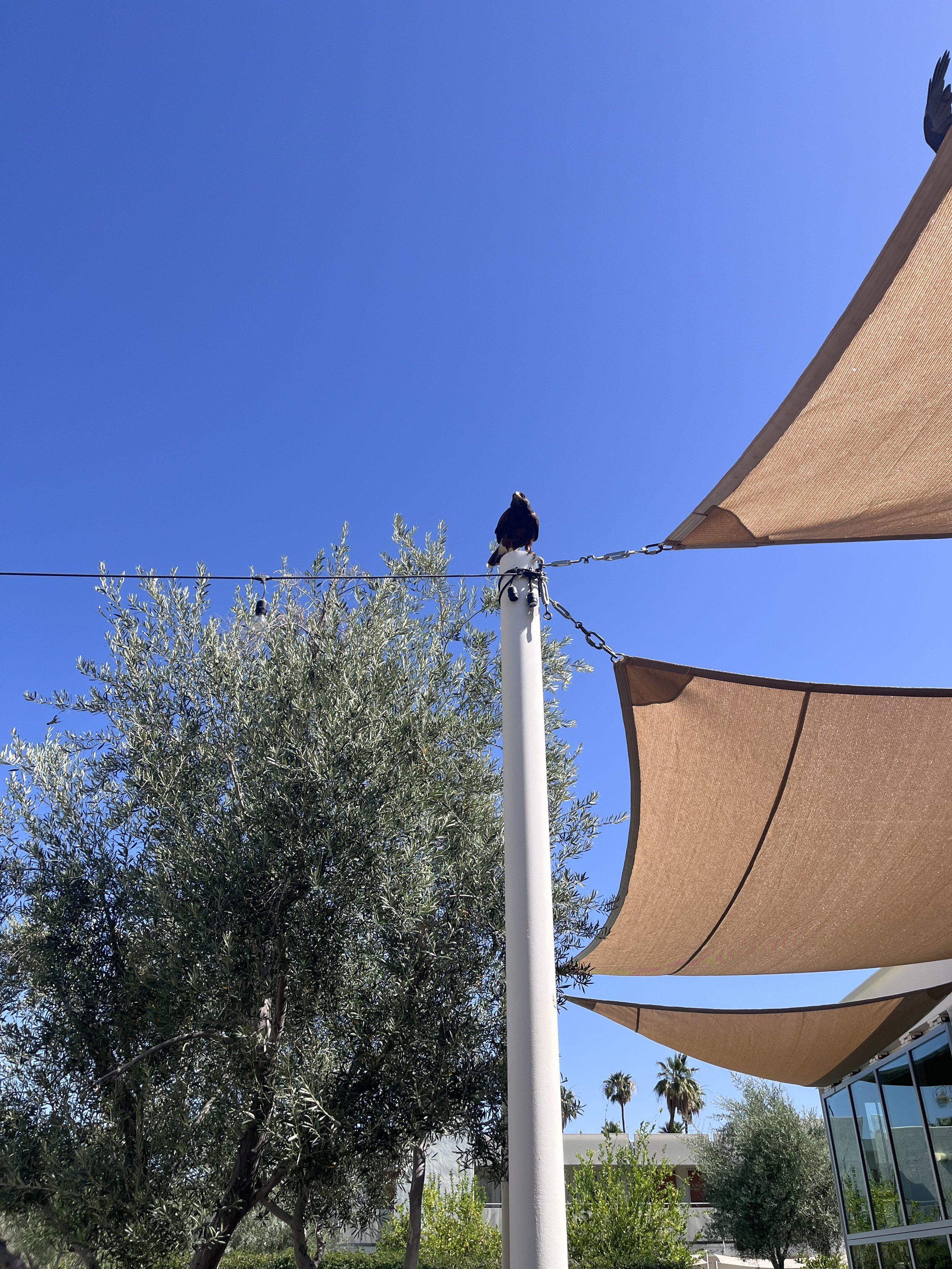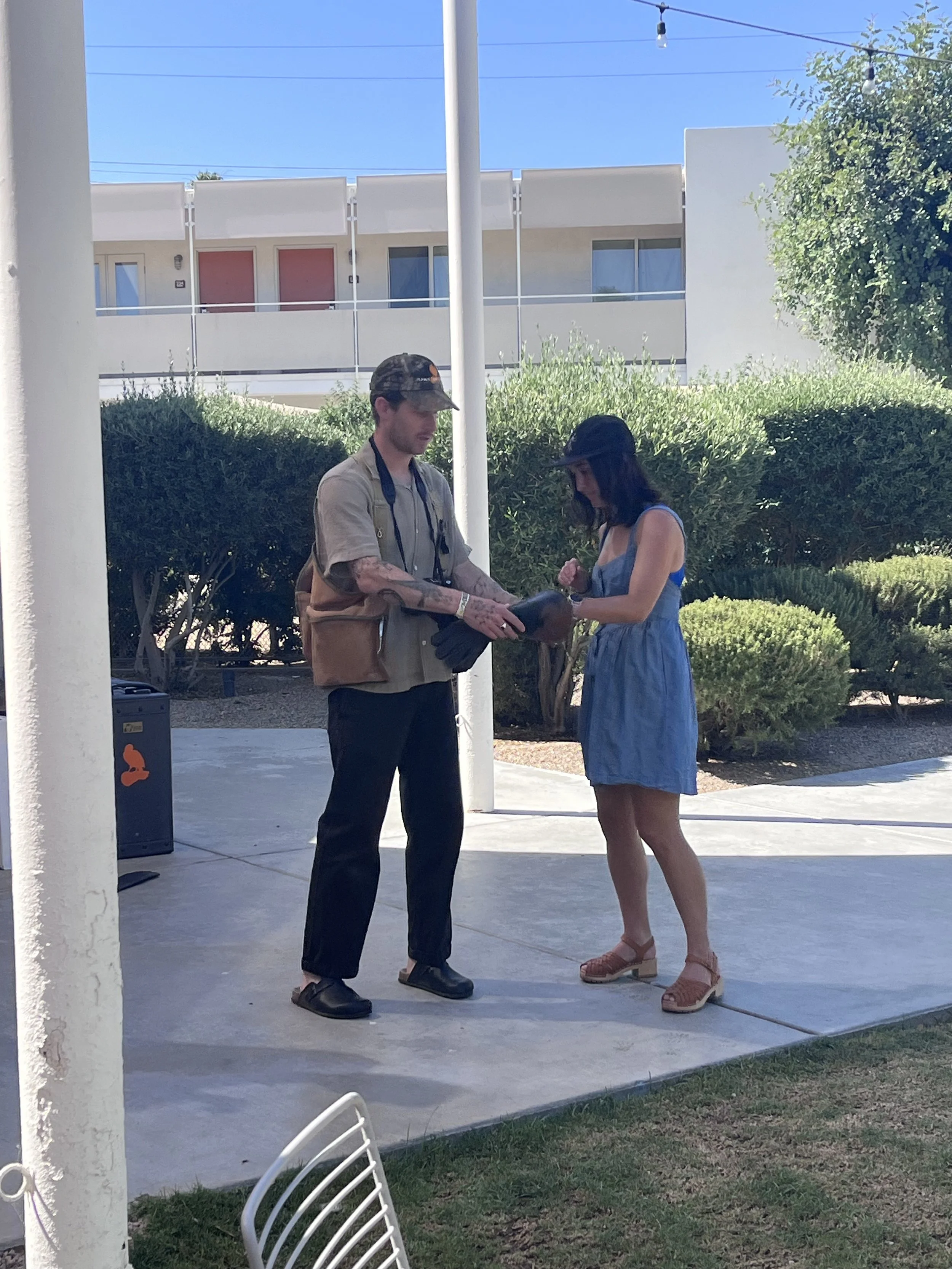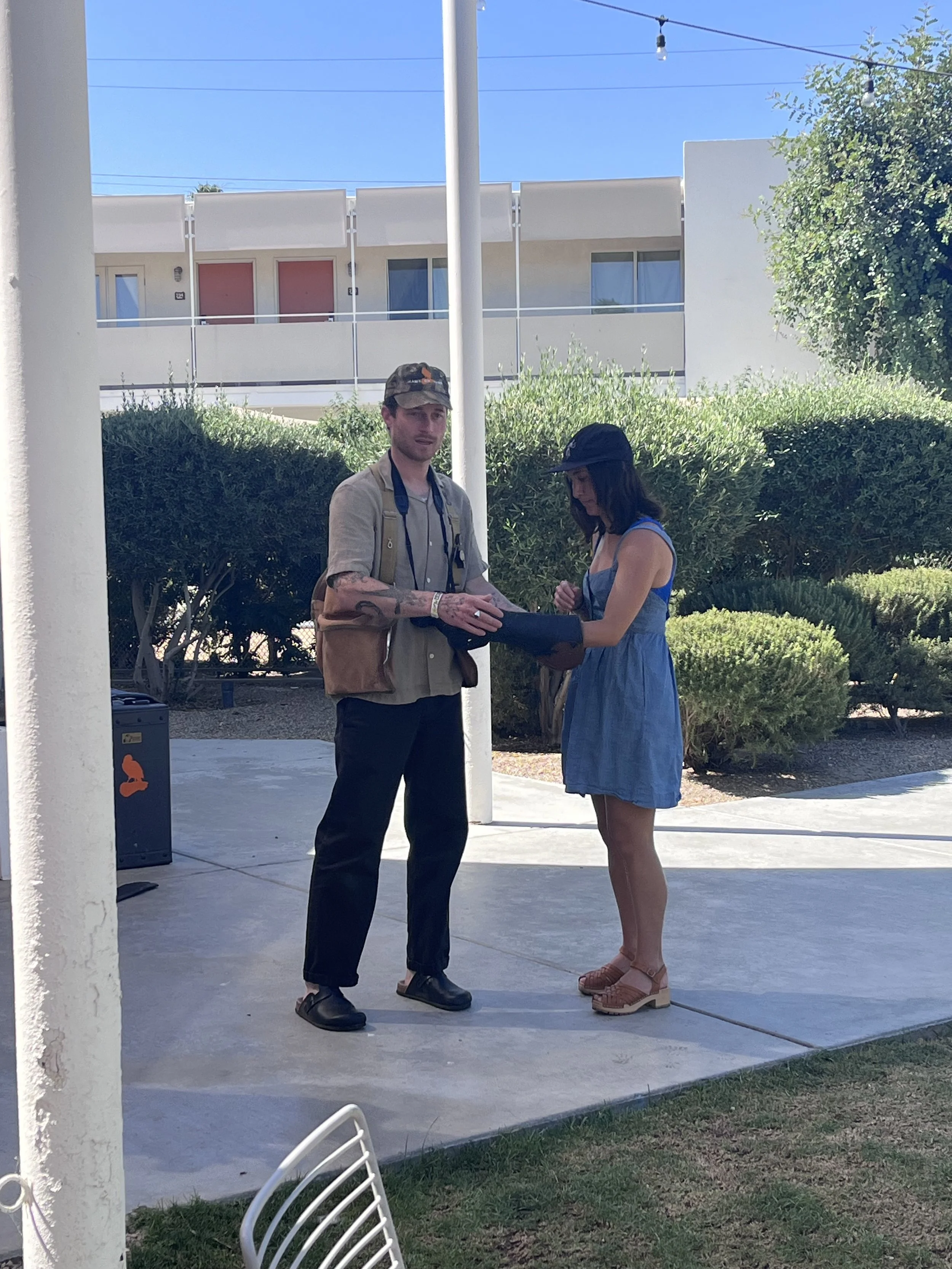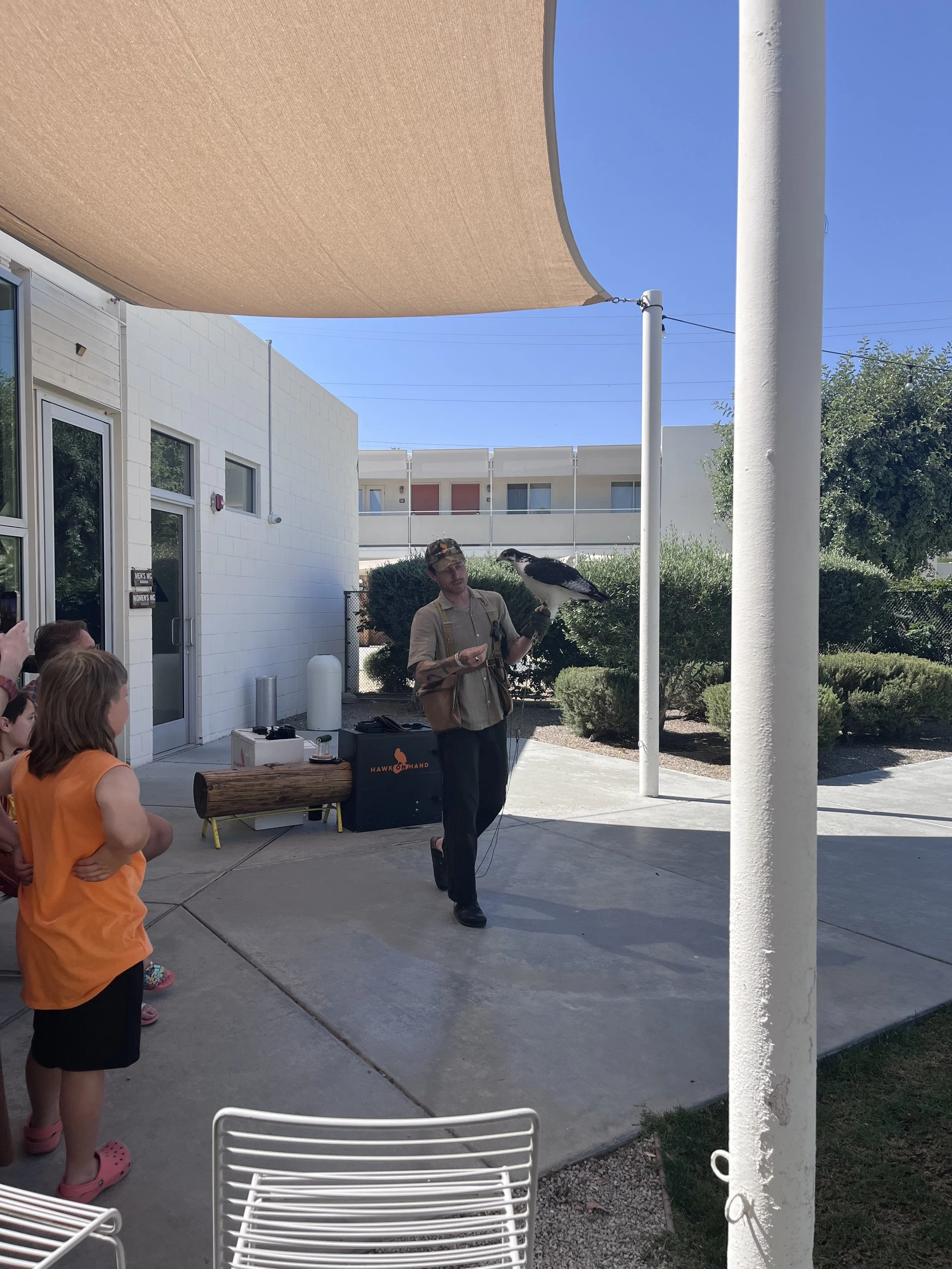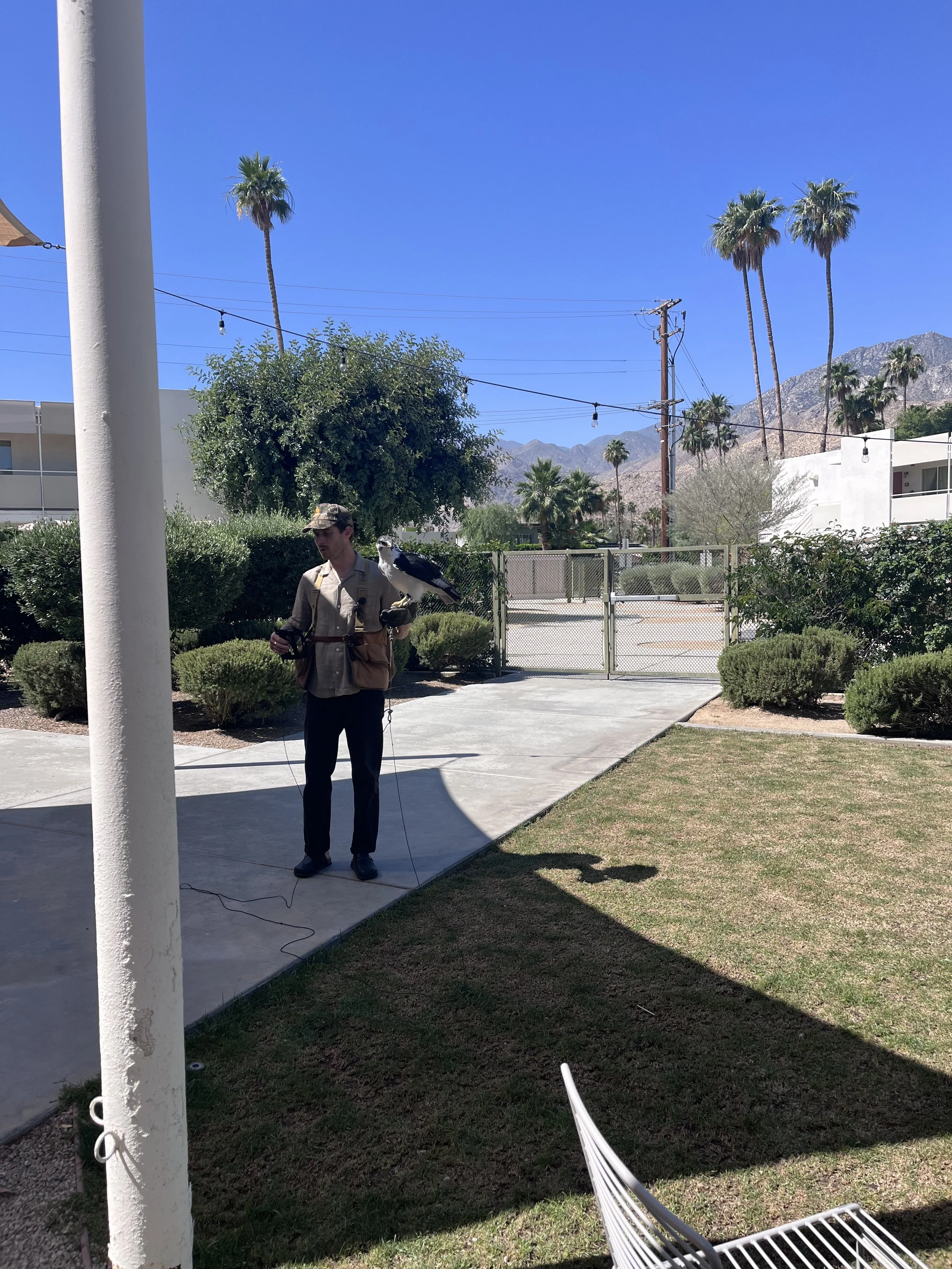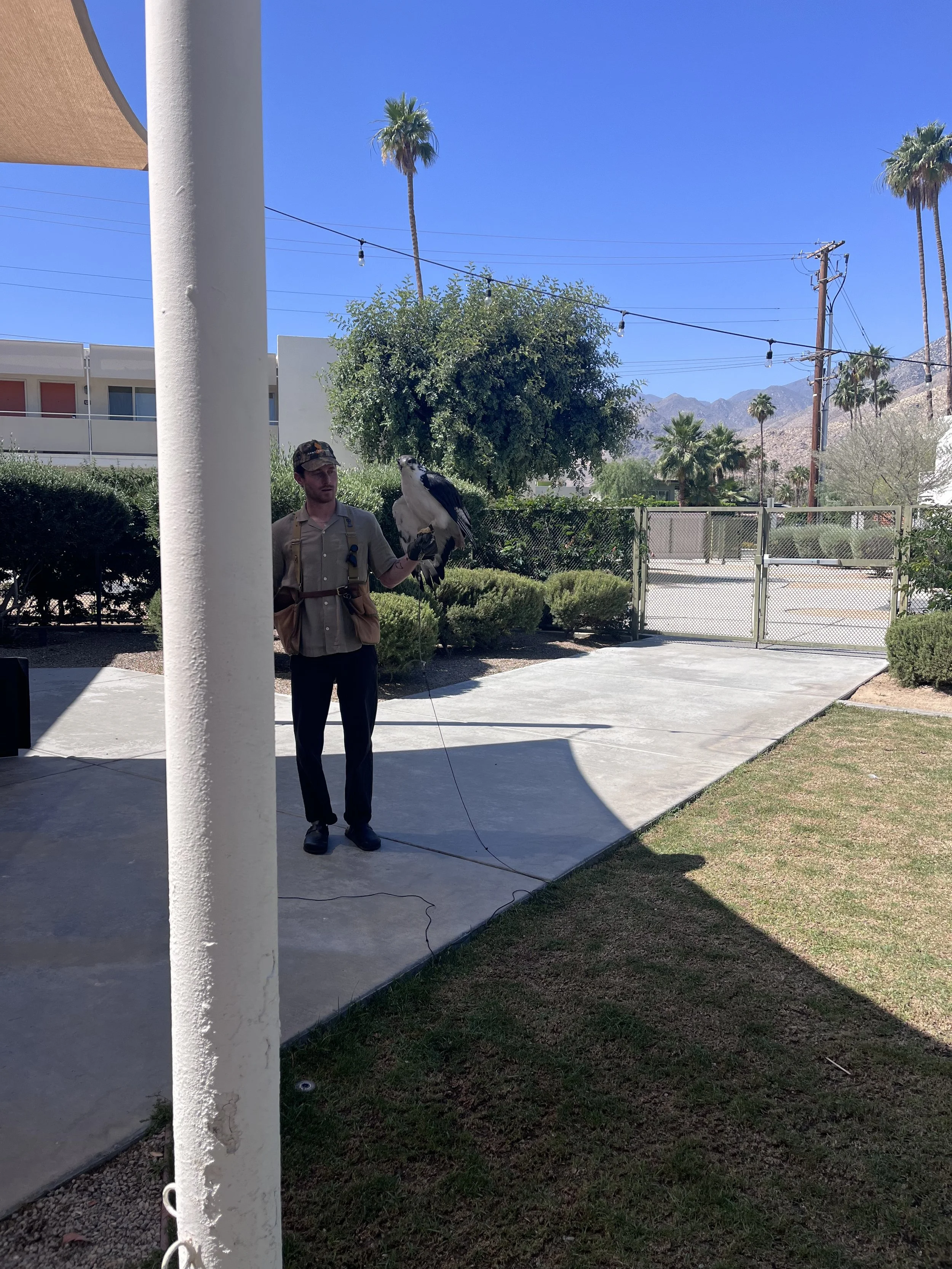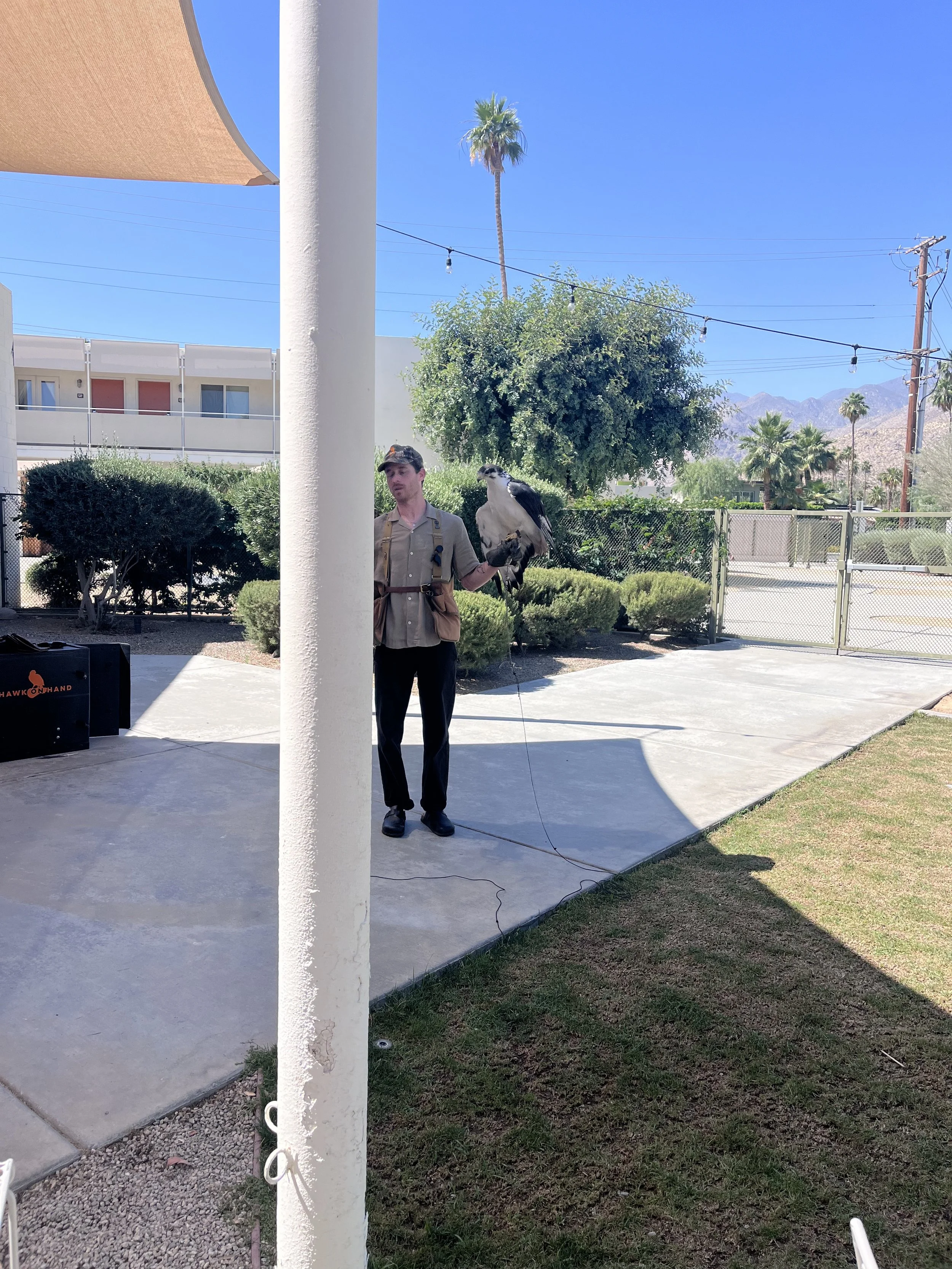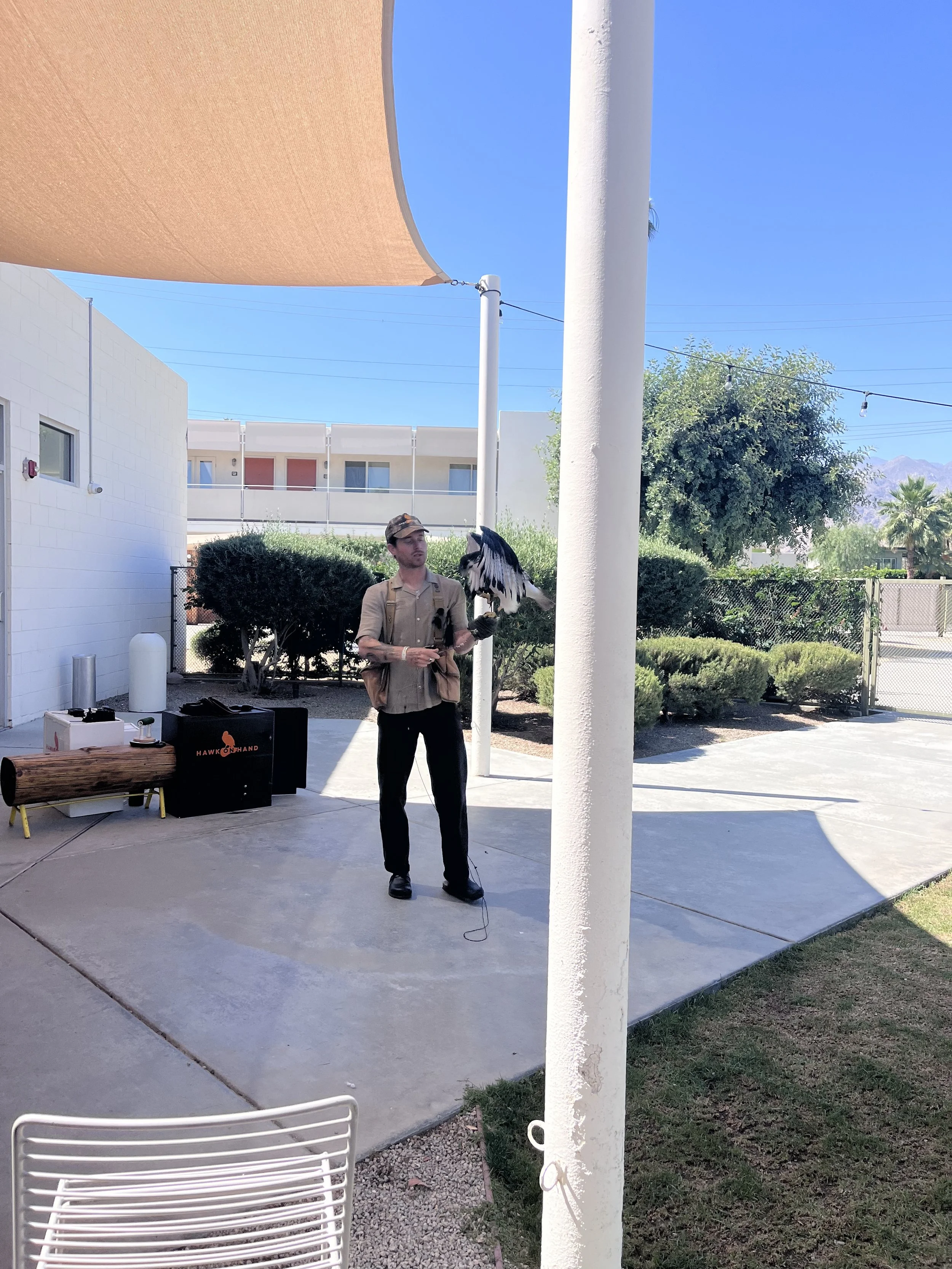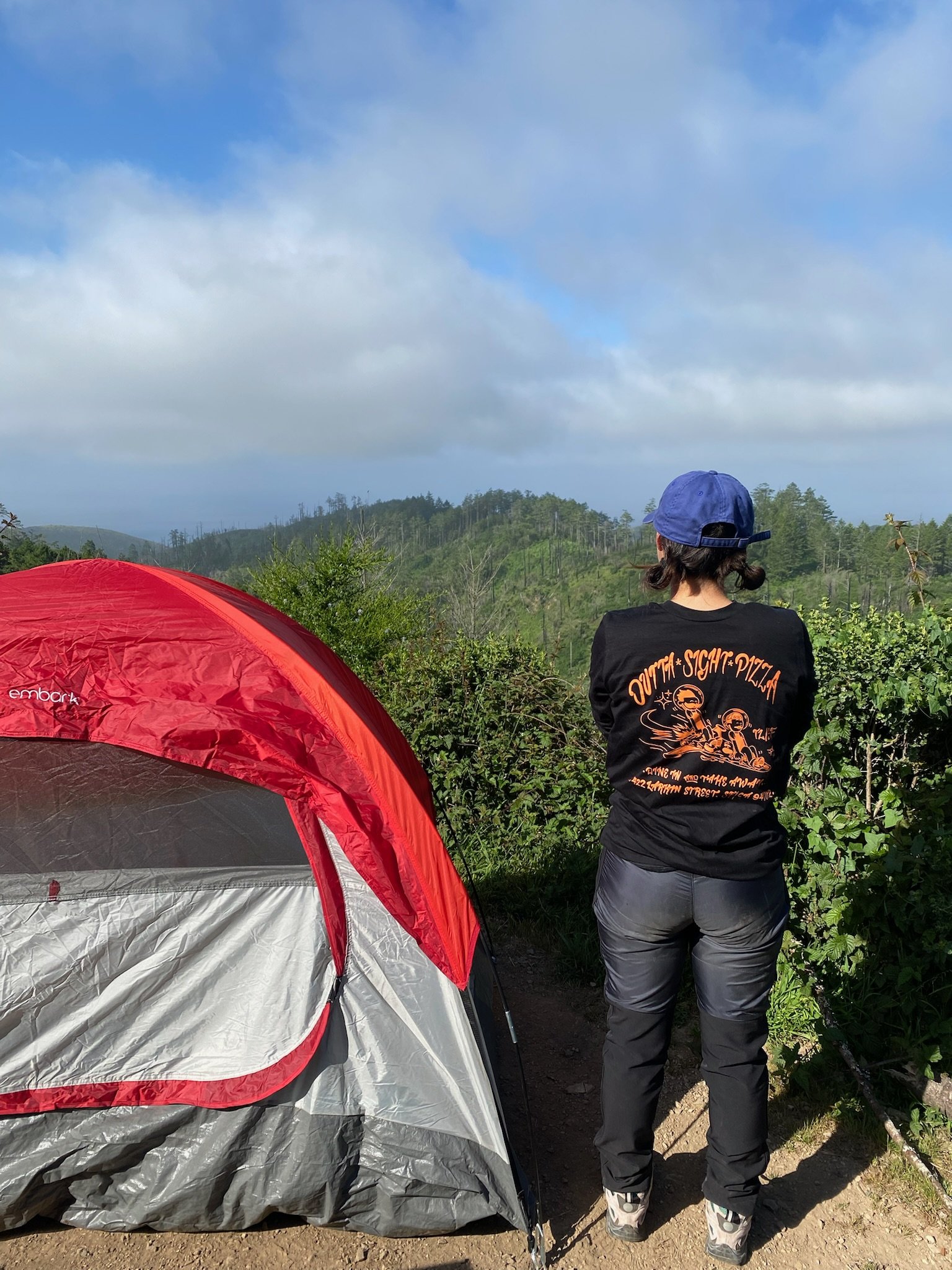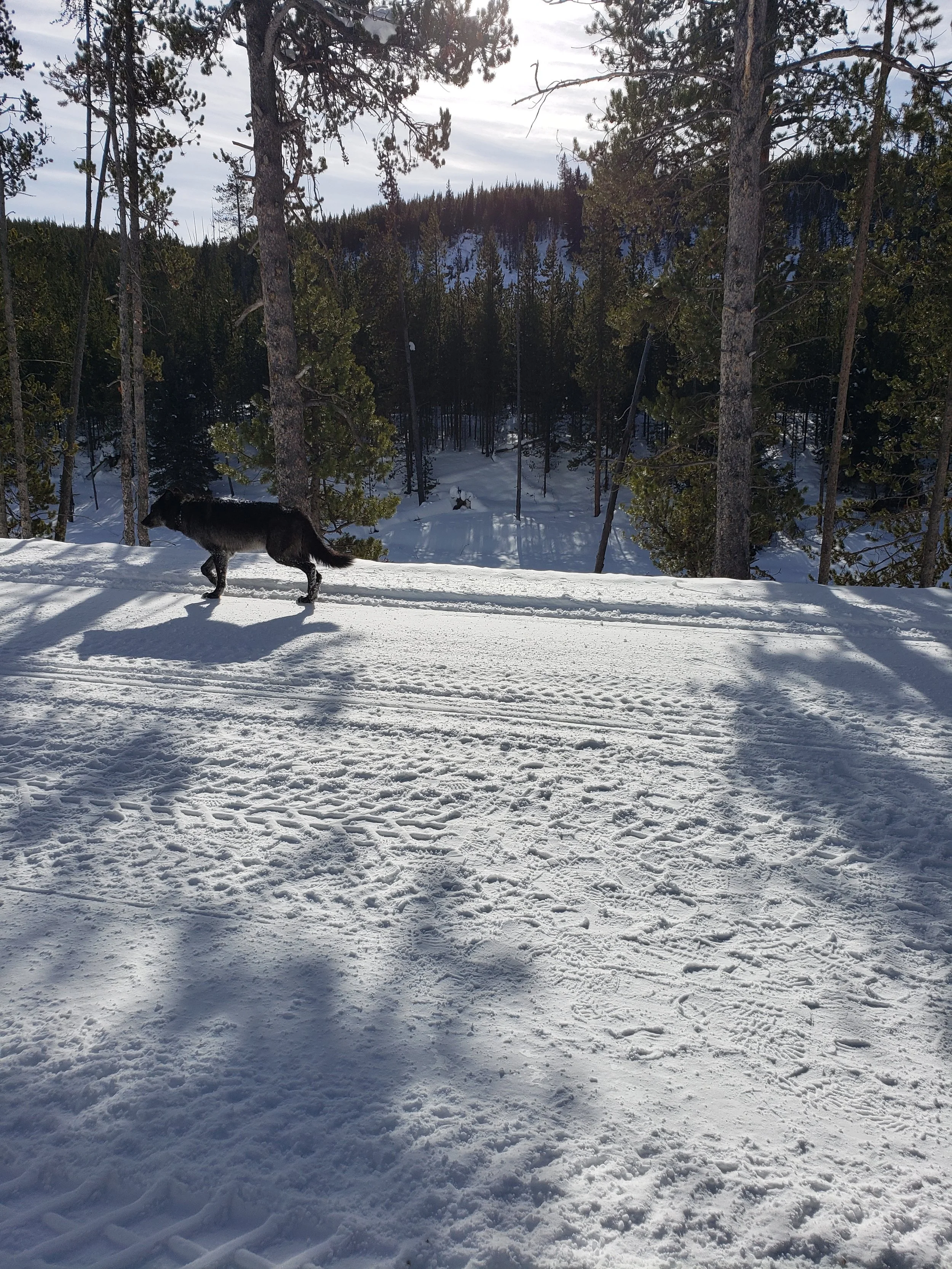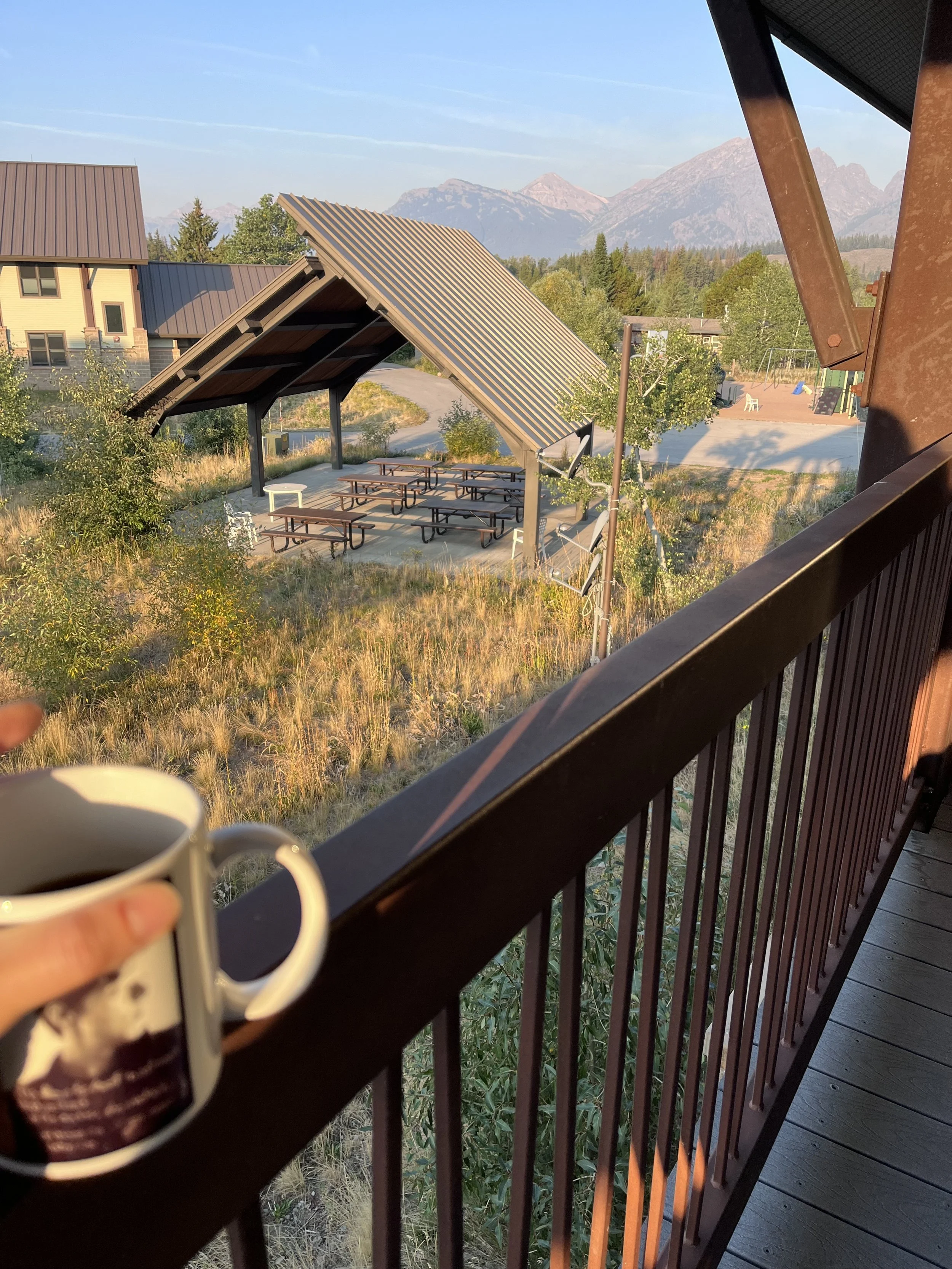Birds of Prey Falconry Experience in Palm Springs
The sun hit the pool deck at the Ace Hotel in Palm Springs. It was 8:30 in the morning, and a different type of hawk circled: pool-goers on the hunt for a lounge chair. We had 30 minutes before our 9am falconry workshop with Hawk on Hand, which we had signed up for at midnight the night before.
When the workshop was about to start, we moved from the larger pool to a smaller one at the back of the hotel property. There was a grassy area with small boulders arranged in a semicircle. A wooden log-shaped perch was also already in place.
We waited a few minutes for the Master Falconer to arrive. (PS if you prefer to watch a video about this, you can here >)
We saw him as he approached from one of the hotel rooms to our right. He moved slowly down a flight of stairs, somehow managing to juggle three large carrier boxes, a camera, gloves, and some rope.
I’ll admit that I bristled at the sight of the three boxes he clutched. I couldn’t imagine any animal feeling comfortable inside something like that. However, as my friends asked me to pause and listen. After all, I’m no bird expert.
Sure enough, the first bird we met was a young and anxious barn owl. Archie, his brown feathers and white head twisting as each new sound reached his sensitive ears. He wanted nothing more than to return to the comfort of his little box.
Bird Intro 1: Archie
The little owl was something you’d imagine seeing in a movie. His round face and forward-facing eyes watched us. All I could think about when I heard his name was the song “Archie, Marry Me” by Alvvays.
From watching the Harry Potter DVD extras growing up, I had learned the unbearably disappointing fact that owls aren’t very wise. In fact, they can be “quite thick” in the British sense of the word. We likely assumed they were wise because their faces resemble ours more than other birds’ do. Unsurprisingly, little Archie’s lack of discernment made him all the more endearing to me.
Here’s what I learned about barn owls:
Owls use their hearing more than their eyesight when hunting.
The round shape of an owl’s face and the ruffle of feathers (facial ruff) surrounding it act as a reflector for sound.
Owls’ ears are asymmetric, which allows them to pinpoint sounds and the creatures they’re hunting with incredible precision.
After some short flights on a leash, given he was in a new area and was a fairly new bird for the Falconer, Archie returned happily to his box.
Bird Intro 2: Jasper
What looked like a miniature griffin was retrieved from a box one size larger. Jasper, with his red feathers, curved yellow beak, and honey-colored eyes exuded a dashing confidence that poor, sweet Archie did not yet possess.
Much cleverer, yet challenging in his own ways, this Harris Hawk was allowed to fly off-leash and show off his skills at detecting and navigating. The Falconer shined a green laser light and Jasper raced toward it, finding it easily.
Each of us took turns donning a large glove, tucking a treat of some type of carnivores’ delight between our thumb and forefinger, then lifting a hand to summon him.
When it was my turn, the bird of prey landed on my arm, and I thought that he resembled something from an era gone by. He was a being that should not exist in today’s world, and yet here he was, annoyed with the crows and hummingbirds who taunted him.
Here’s what I learned about Harris Hawks:
These birds hunt in packs like wolves, inclusive of a hierarchy system. This is unlike other birds of prey and allows them to catch large prey.
Birds of prey, unlike dogs, do not love you back. It is essential to keep them satiated and healthy, though not full. They are food motivated, and the relationship between hawk and Falconer comes down to the food and shelter they’re provided by the Falconer.
Bird Intro 3: Kanoni
We heard the last bird before we saw her. The stunning, large black-and-white bird came out from her box, calling out to make her presence known to us. As she sat on the Falconer’s hand, soft white feathers dropped and drifted. She was molting.
Kanoni, it turned out, was something of a diva. She picked at her Falconer’s glove, annoyed that there wasn’t more food hidden there. She yelled when attention wasn’t on her. She bit at her leash, annoyed to be tethered. And, we learned, when she was learning to go into her box, she quickly discovered that opening her wings (a large span) would make it difficult for her to be placed inside.
There’s something enchanting about a lady who knows how to get her way, and the striking beauty of Kanoni helped to make her a favorite.
What I learned about Augur Buzzards:
Kanoni was a species of hawk from Eastern Africa called an Augur Buzzard. This species is closely related to red-tailed hawks and though she was mainly black-and-white, her tail had a red hue.
An Augur Buzzard is a top predator meaning its only real threat is humans.
Augur Buzzards are diurnal meaning they hunt in the day.
After her short flights, Kanoni was sheltered away back into her box to wait out the short time between our workshop and the second one that Hawk on Hand would host that day.
I returned to the big pool with more questions buzzing through my mind. If barn owls were nocturnal, why were they trained to be falconry birds that are needed in the daylight? What did this do to their biology? How many eggs does each species typically lay? How did these birds come to exist from an evolutionary perspective?
But I suppose that’s what Google is for (though I wouldn’t mind signing up for another workshop again or getting some great recommendations on bird books :) ).
Or I’ll finally sign up to do the falcon rehabilitation volunteering that a friend told me about for an upcoming volunteering idea.

